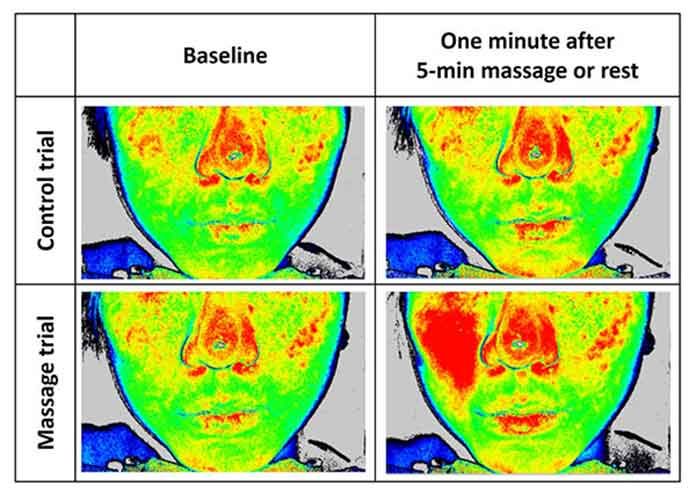Facial massagers are everywhere right now. Whether they’re made of jade or rose quartz or some other fashionably colored crystal, these devices are far more attractive than any cosmetic device deserves to be.
Beauty experts rave about them, and millions of us buy them, but what do scientists make of face massage rollers?
Naoyuki Hayashi of the Institute for Liberal Arts, Tokyo Tech and colleagues at Tokyo Healthcare University and the Research and Development Center, MTG Co. Ltd., conducted short- and long-term experiments involving the participation of healthy male and female volunteers to examine the effects of using a massage roller on facial skin and blood flow.
They found that even a five-minute massage can significantly increase facial skin blood flow in the massaged cheek, with a relative change of up to around 25%. Representation of the change in the bloodstream was accomplished utilizing a non-intrusive strategy called laser speckle flowgraphy.
In the long term experiment, the scientists analyzed the impacts of day by day rub on the right cheek over a five-week time span. They likewise analyzed the reactivity of facial veins to a warmth improvement, including utilization of a warming test set at 40 ℃, with the end goal to test whether there were any progressions in vascular dilation reaction.
Scientists noted, “One surprising outcome was the duration of the effect immediately after the five-minute massage. “The increase in skin blood flow after applying the massage roller persisted much longer than we had expected. Short-term mechanical stimulation by a facial massage roller increased skin blood flow for more than ten minutes solely in the massaged cheek.”
The findings suggested that utilizing a roller enhanced blood stream reaction, or the supposed vasodilatory reaction, to heat stimulation. One clarification for this could be that endothelial cells in the massaged area deliver more nitric oxide, which is known to be a powerful vasodilator.
The study is published in the journal Complementary Therapies in Medicine.
